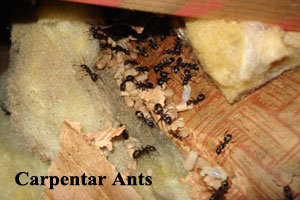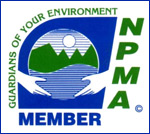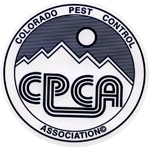Ant Control

Front Range Pest Control of Fort Collins has trained professional experts in ant control in or outside the home, as well as any type of structure. We will formulate a plan to fit your needs, no matter how large the ant problem is that is infesting your space.
Ants in the Home
Almost anywhere in the state one travels, ants will be the most common insects that can be found in yards, gardens, fields and forests. Tremendous numbers of ants normally reside in a typical house lot, although most lead unobserved lives underground or otherwise out of sight. Often it is only when they occur indoors or produce their periodic mating swarms that they come to human attention.
Overall, the activities of ants are quite beneficial. Many feed on other insects, including pest insects. Ant scavenging helps to recycle organic matter and their tunneling is useful in aerating and mixing soils. On the other hand, ants sometimes promote the activities of certain plant pests, notably aphids, that excrete sweet sugary honeydew that is favored by many ants.
Ants most prominently become problems when they are found in homes. Most ants found indoors in Colorado are merely foragers, seeking food or water in a home but returning to colonies they have established outdoors. A small number of the ants found indoors may become more permanent residents and establish a nest within a building. This ability to nest indoors is most often associated with pharoah ants; some colonies of pavement ants and carpenter ants may establish within a building.
Ants Commonly Found in Colorado Homes
Pavement ants (Tetramorium caespitum) are ants to have first found their way to Colorado only in the past few decades but now are often the most common species that people notice (Figure 2). They characteristically produce small mounds of soil at entrances of their nest, and nests are often located under pavement or rocks (Figure 3). They are small ants (1/10-1/16-inch), dark-brown colored and have fine grooves that line their head. Pavement ants forage a wide variety of foods, usually consistently preferring greasy materials. Feeding habits shift during the season with higher protein materials being sought when young are being reared and sugars more favored at other times.
Field ants (Formica species) are among the most common ants found in yards and gardens and are observed in homes most commonly in spring (Figure 4). They are black or reddish-brown and black ants of medium size (3/16-1/3 inch) and sometimes are mistaken for carpenter ants. The nest outdoors in loose soil and some produce mounds that incorporate twigs, dried leaves and other plant materials. Migrations into homes occur in spring when soils warm enough to cause colonies to resume activity but cool temperatures prevent normal foraging in yards. Field ants feed on a variety of foods but most often are observed visiting sweet honeydew excreted by aphids and or other sweet materials.
Carpenter ants (Camponotus species) are the largest ants that occur in Colorado (1/4-3/8 inch) and are particularly abundant in forested areas. They may be either black or black with a reddish brown thorax. They are most similar to the field ants but can be distinguished by examining them in side view, with the thorax of the carpenter ants being uniformly rounded without indentation. Carpenter ants nest in wood, almost always establishing colonies in wood that has been softened by decay. Carpenter ants found in homes almost always are foragers that will return to an outdoor nest in the yard. Rarely they will establish a nest in the building, always at some point of previous water-damage. Carpenter ants (Figure 5) mostly feed on a mixture of dead insects and honeydew.
Cornfield ants (Lasius species) are relatively small ants (less than 1/8 inch) that are usually light to medium-brown colored. They nest outdoors but sometimes will enter buildings to feed on sweet materials.
Odorous house ants (Tapinoma sessile) are small (1/10-inch) black ants that have only recently been found in Colorado (Figure 6). When disturbed, they will raise their abdomen and emit an odor reminiscent of coconut. They do not nest indoors but may enter to forage on various foods including sweets, cooked vegetables, fruit slices and pastries. Heavy mulch adjacent to building foundations has been associated with increased problems with odorous house ants.
Pharoah ants (Monomorium pharoaensis) are minute (1/12 inch), lightbrown ants that are adapted to nesting in buildings. Nests can spread extensively through a structure as pharoah ants may frequently move nest locations, produce multiple queens, and may split to form "satellite" colonies. Pharoah ants feed on a wide range of foods that include syrups, jellies, grease, cake, and pet foods. They can be serious pests of hospitals, dormitories and apartments.
Management of Household Ants
The first and most important step to reducing problems with ants occurring in homes is to eliminate sources of food and water that are attractive. In addition to obvious sources of food left on counters, sinks or floors, spilled food in cupboards and food associated with trash baskets may also be visited by foraging ants. Dripping faucets and leaking pipes may also be important water sources that ants will use. Also, if ants have been foraging in a home, wash down counters or floors with some household cleaner to eliminate the odor trails the ants have established to locate sources of food or water.
Most ants found in homes nest outdoors, sometimes adjacent to building foundations. Heavy mulch, piled leaves or ground covers that abut buildings can provide cover for ant colonies and can increase the likelihood of their subsequent occurrence in a house. Keeping the area around the building foundation free of cover can reduce the likelihood of ants foraging indoors.
Insecticides can be useful to control ants and a wide range of ant control products are available. These are primarily used either to: 1) generally suppress ant numbers in a yard; 2) establish perimeter barriers around a home; 3) spot treat foraging ants found in homes; or 4) incorporate into baits to kill colonies.
Give Front Range Pest Control of Fort Collins a call at (970) 203-1911 to get your Ant Problem under control!


